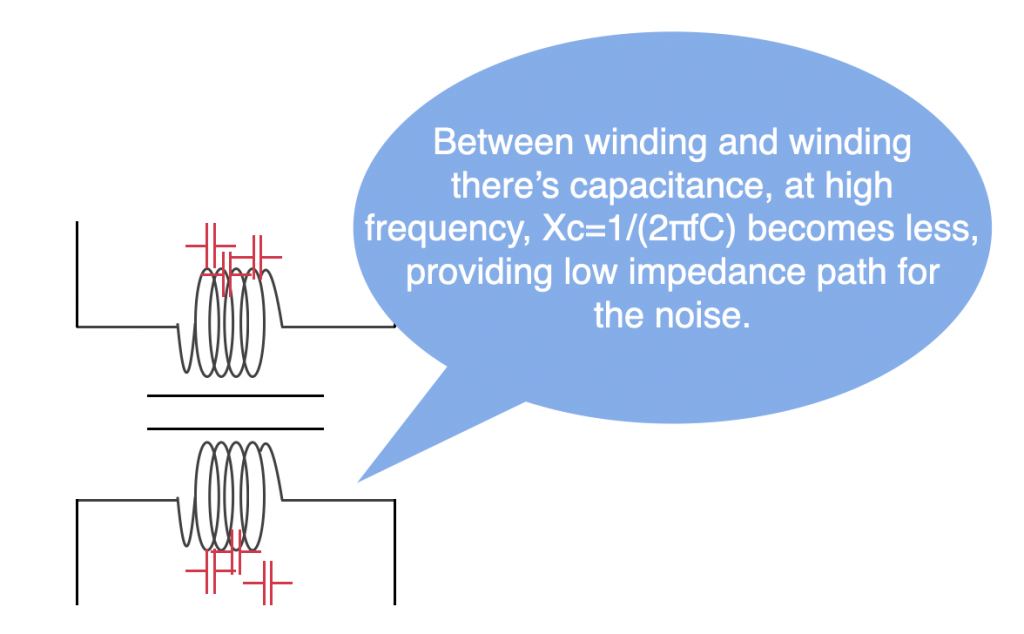My common-mode choke failed to work as expected, why?
From: David, power electronics engineer, England
Question: We had one expensive common-mode choke (CMC) fitted on our board for front end filtering purposes, during the EMC test, it was found that the CMC didn’t provide the attenuation that we were hoping for. We did some test, including removing the CMC completely. What we found was that, though ineffective at designed frequency (30 MHz), when removing the CMC, the low frequency (150-500 kHz) noise was getting much worse. Any advice?
Answer: This is a typical case where a CMC failed to do what it is designed for. When designing a CMC, the following points need to check
- Is there any conductor nearby that could potentially bypass the CMC? These conductors could be a ground plane on layer 1 underneath the CMC, or cables running along the CMC. Noise would couple to these structures rather than using the CMC since a plane or cable has definitely less impedance compared with a CMC.
- Is the CMC wound in a way that it will be effective? For instance, if there’re many turns of windings, then certainly it will introduce inter-winding capacitance, together with the leakage inductance, the CMC will have a resonance point in its impedance vs frequency curve, at the resonant frequency, you will lose the filtering capability you design.
- If you want purely common mode filtering (with minimum differential mode filtering), consider using bifilar wound CMC, rather than the sectional wound CMC. Bifilar wound CMC has less than 0.5% leakage inductance, ideally for CM filtering. But the tricky part is as current rating goes higher, it is difficult to make a bifilar winding configuration.
The fact that when you removed the CMC, your high frequency performance stayed the same, but low frequency performance got worse indicates that the CMC you chose has a higher leakage inductance. Leakage inductance together with a capacitor on the board forms an effective L-C filter, this differential-mode filter would work well in the frequency range of 150-500 kHz. At higher frequency, I suspected that the interwinding capacitance of the CMC become dominant, so you end up with a low impedance path for the noise you tried to filter.
